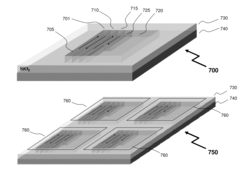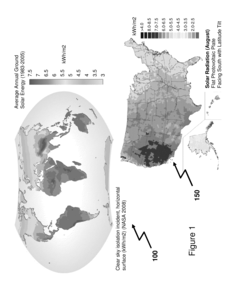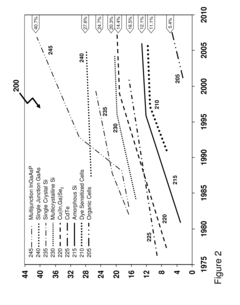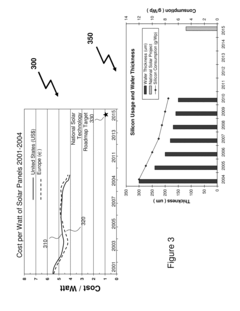Tungsten's Future In Led Lighting Efficiency
Tungsten LED Evolution
The evolution of tungsten in LED lighting efficiency represents a significant technological journey in the field of illumination. Initially, tungsten filaments were the cornerstone of incandescent lighting, dominating the market for over a century. However, as energy efficiency became a pressing concern, the industry began to explore alternatives, leading to the development of LED technology.
The transition from tungsten-based lighting to LED was not immediate but occurred in stages. Early LEDs were limited in their light output and color rendering capabilities, making them unsuitable for general lighting applications. As research progressed, the efficiency and quality of LEDs improved dramatically, challenging the dominance of tungsten-based lighting solutions.
A key milestone in this evolution was the development of white LEDs. This breakthrough allowed LEDs to compete directly with traditional tungsten lighting in terms of light quality and color temperature. The ability to produce warm white light, similar to that of tungsten filaments, was crucial in gaining consumer acceptance and driving widespread adoption.
The efficiency gains of LEDs over tungsten-based lighting were substantial. While incandescent bulbs typically convert only about 5% of energy into visible light, modern LEDs can achieve efficiencies of 40% or more. This dramatic improvement in energy conversion has been a primary driver in the shift away from tungsten-based lighting.
Despite the rise of LEDs, tungsten has not been entirely displaced from the lighting industry. In fact, the unique properties of tungsten have found new applications in LED technology. For instance, tungsten is used in the production of certain types of LED chips, particularly those designed for high-power applications.
The evolution of tungsten's role in lighting efficiency has also spurred innovation in other areas. For example, the development of more efficient phosphors and improved heat management techniques has been crucial in enhancing LED performance. These advancements have indirectly benefited from the knowledge gained through decades of working with tungsten-based lighting systems.
Looking forward, the future of tungsten in LED lighting efficiency is likely to be focused on niche applications and specialized uses. While traditional tungsten filament bulbs are being phased out in many markets due to energy efficiency regulations, the material itself continues to play a role in advanced lighting technologies. Researchers are exploring ways to leverage tungsten's unique properties in novel LED designs, potentially leading to even more efficient and versatile lighting solutions in the future.
LED Market Dynamics
The LED lighting market has experienced significant growth and transformation over the past decade, driven by technological advancements, energy efficiency regulations, and increasing consumer awareness of sustainable lighting solutions. As traditional lighting technologies, including tungsten-based incandescent bulbs, continue to phase out, LEDs have emerged as the dominant force in the global lighting industry.
The global LED lighting market size was valued at approximately $54 billion in 2019 and is projected to reach $127 billion by 2027, growing at a CAGR of 13.4% during the forecast period. This robust growth is attributed to several factors, including the declining prices of LED components, improved energy efficiency, and longer lifespan compared to conventional lighting technologies.
Residential, commercial, and industrial sectors are the primary end-users driving the LED market dynamics. The residential segment has witnessed rapid adoption due to the increasing availability of affordable LED products and growing consumer awareness of energy-saving benefits. Commercial applications, including office buildings, retail spaces, and hospitality venues, have also embraced LED lighting for its energy efficiency and reduced maintenance costs.
Government initiatives and regulations promoting energy-efficient lighting solutions have played a crucial role in shaping the LED market landscape. Many countries have implemented policies to phase out inefficient lighting technologies, such as incandescent bulbs, which has accelerated the transition to LED lighting. For instance, the European Union's ban on halogen lamps in 2018 has significantly boosted LED adoption across member states.
The competitive landscape of the LED lighting market is characterized by the presence of both established players and new entrants. Key market players include Philips Lighting (Signify), Osram, Cree, and GE Lighting. These companies are investing heavily in research and development to improve LED efficiency, reduce costs, and develop innovative lighting solutions.
Technological advancements continue to drive market growth and shape consumer preferences. The integration of smart lighting systems, IoT connectivity, and human-centric lighting designs are emerging trends that are expected to further propel the LED market. These innovations not only enhance energy efficiency but also offer additional functionalities such as customizable lighting scenarios, remote control, and integration with smart home ecosystems.
As the LED market matures, price competition has intensified, leading to margin pressures for manufacturers. This has prompted companies to focus on value-added services, such as lighting-as-a-service models and customized lighting solutions, to maintain profitability and differentiate their offerings in an increasingly commoditized market.
Tungsten LED Challenges
Tungsten has long been a staple in traditional lighting technologies, but its role in LED lighting efficiency presents significant challenges. The primary obstacle lies in the inherent limitations of tungsten as a material for LED applications. While tungsten filaments have been the cornerstone of incandescent bulbs for over a century, their integration into LED technology requires a fundamental shift in approach.
One of the main challenges is the high melting point of tungsten, which makes it difficult to incorporate into the semiconductor materials typically used in LED manufacturing. This incompatibility necessitates innovative engineering solutions to bridge the gap between tungsten's properties and LED requirements. Additionally, tungsten's thermal characteristics, while beneficial in incandescent bulbs, can be detrimental to LED performance, potentially reducing the overall efficiency of the lighting system.
Another significant hurdle is the energy conversion efficiency. Traditional tungsten filaments convert only a small portion of electrical energy into visible light, with the majority being lost as heat. In contrast, LEDs are inherently more efficient in this regard. Integrating tungsten into LED systems without compromising this efficiency advantage poses a substantial technical challenge.
The durability and lifespan of tungsten-enhanced LEDs also present concerns. LEDs are known for their long operational life, often lasting tens of thousands of hours. Incorporating tungsten elements must not compromise this longevity, which is a key selling point for LED technology. Engineers must develop ways to protect tungsten components from degradation over time, especially when exposed to the electrical and thermal stresses typical in LED operations.
Cost-effectiveness is another critical challenge. While tungsten is relatively abundant, the processes required to integrate it effectively into LED technology may be complex and expensive. Balancing the potential benefits of tungsten incorporation against the increased production costs is crucial for commercial viability.
Lastly, environmental considerations cannot be overlooked. The LED industry has made significant strides in reducing the environmental impact of lighting. Any integration of tungsten must align with these sustainability goals, ensuring that the production, use, and disposal of tungsten-enhanced LEDs do not introduce new environmental concerns.
Current Tungsten LED Tech
01 Improved tungsten deposition methods
Advanced techniques for depositing tungsten in semiconductor manufacturing, focusing on enhancing efficiency and uniformity of the deposition process. These methods aim to improve the quality of tungsten layers in integrated circuits, resulting in better performance and reliability of electronic devices.- Improved tungsten deposition methods: Advanced techniques for depositing tungsten in semiconductor manufacturing, focusing on enhancing efficiency and uniformity of the deposition process. These methods aim to improve the quality of tungsten layers in integrated circuits, resulting in better device performance and reliability.
- Tungsten-based composite materials: Development of composite materials incorporating tungsten to enhance overall efficiency and performance. These composites combine tungsten with other elements or compounds to create materials with improved properties for various applications, such as heat resistance, electrical conductivity, or mechanical strength.
- Efficient tungsten recycling processes: Innovative methods for recycling tungsten from used products or manufacturing waste, focusing on improving the efficiency of recovery and purification processes. These techniques aim to reduce the environmental impact of tungsten production and conserve valuable resources.
- Tungsten-based energy-efficient lighting: Advancements in tungsten-based lighting technologies, particularly in improving the efficiency of tungsten filaments in incandescent and halogen lamps. These innovations focus on enhancing luminous efficacy and extending the lifespan of tungsten-based light sources.
- Optimization of tungsten mining and processing: Improved techniques for tungsten ore extraction and processing, focusing on increasing efficiency in mining operations and refining processes. These methods aim to reduce energy consumption, minimize waste, and enhance the overall yield of tungsten production.
02 Tungsten-based composite materials
Development of composite materials incorporating tungsten to enhance various properties such as strength, heat resistance, and electrical conductivity. These composites find applications in aerospace, energy, and defense industries, offering improved performance and efficiency in extreme environments.Expand Specific Solutions03 Efficient tungsten recycling processes
Innovative methods for recycling tungsten from scrap materials and end-of-life products. These processes aim to recover tungsten efficiently, reducing waste and conserving resources. Improved recycling techniques contribute to the sustainable use of tungsten in various industries.Expand Specific Solutions04 Tungsten-based energy-efficient lighting
Advancements in tungsten filament technology for lighting applications, focusing on improving energy efficiency and longevity. These innovations aim to enhance the performance of tungsten-based light sources, making them more competitive with newer lighting technologies.Expand Specific Solutions05 Optimized tungsten mining and processing
Improved techniques for tungsten ore extraction and processing, aimed at increasing efficiency and reducing environmental impact. These methods focus on enhancing ore recovery rates, minimizing energy consumption, and developing more sustainable mining practices.Expand Specific Solutions
Key LED Manufacturers
The LED lighting industry is in a mature growth phase, with a global market size expected to reach $127 billion by 2027. Tungsten's role in LED efficiency is evolving, as companies like Koninklijke Philips NV, OSRAM GmbH, and Panasonic Holdings Corp. lead innovation. These firms, along with emerging players such as Wolfspeed, Inc. and Lite-On Technology Corp., are advancing thermal management and phosphor technologies. The competition is intensifying as companies like Xiamen Honglu Tungsten Molybdenum Industry Co., Ltd. specialize in tungsten applications, while others focus on alternative materials and designs to enhance LED performance and reduce costs.
Koninklijke Philips NV
Wolfspeed, Inc.
Tungsten LED Innovations
- A lateral metal-catalyzed growth process is employed, where a nucleation site is established on a substrate, and a second material with a different lattice constant is grown, allowing for controlled crystal growth and prevention of grain boundary formation, enabling the formation of single-crystalline materials on large amorphous substrates.
- An LED lamp is designed with a complex lens system comprising a top center lens, a wing lens with total internal reflection capability, and a tube lens, which together create an omnidirectional illumination by modifying light beams to cover nearly 360 degrees, mimicking the full directional illumination of traditional tungsten lamps.
Environmental Impact
The environmental impact of tungsten in LED lighting efficiency is a crucial consideration as the industry moves towards more sustainable practices. Tungsten, traditionally used in incandescent bulbs, has been largely phased out in favor of LED technology. However, its potential role in enhancing LED efficiency warrants examination from an environmental perspective.
LED lighting has already significantly reduced energy consumption compared to traditional lighting sources. The incorporation of tungsten in LED technology could potentially further improve this efficiency, leading to even lower energy requirements. This reduction in energy consumption translates directly to decreased greenhouse gas emissions from power generation, contributing to global efforts to combat climate change.
However, the environmental benefits of increased efficiency must be weighed against the potential ecological costs of tungsten extraction and processing. Tungsten mining can have significant environmental impacts, including habitat destruction, soil erosion, and water pollution. The energy-intensive nature of tungsten processing also contributes to its carbon footprint, potentially offsetting some of the gains achieved through improved LED efficiency.
Recycling and responsible disposal of LED lights containing tungsten components present another environmental challenge. While LEDs generally have a longer lifespan than traditional bulbs, proper end-of-life management is essential to prevent tungsten and other materials from entering landfills or contaminating ecosystems. Developing efficient recycling processes for these advanced LEDs will be crucial in minimizing their environmental impact.
The use of tungsten in LED lighting may also have implications for resource scarcity. Tungsten is a finite resource, and increased demand could lead to more intensive mining activities. This raises questions about the long-term sustainability of relying on tungsten for lighting efficiency improvements and highlights the need for research into alternative materials that can provide similar benefits with less environmental impact.
On the positive side, if tungsten-enhanced LEDs can significantly extend the lifespan of lighting products, it could lead to a reduction in overall material consumption and waste generation. Longer-lasting lights mean fewer replacements, less manufacturing, and reduced transportation emissions associated with distribution.
In conclusion, while tungsten's potential to improve LED lighting efficiency is promising from an energy-saving standpoint, its overall environmental impact is complex. The industry must carefully balance the benefits of increased efficiency against the ecological costs of tungsten production and disposal. Future research should focus on minimizing the negative environmental aspects of tungsten use in LEDs while maximizing its efficiency-boosting potential, ultimately striving for a net positive impact on the environment.
Cost-Benefit Analysis
The cost-benefit analysis of tungsten's future in LED lighting efficiency reveals a complex landscape of economic and technological factors. Initially, the transition from traditional tungsten filament bulbs to LED lighting presented significant cost savings for consumers and businesses. LEDs offered longer lifespans, reduced energy consumption, and lower maintenance costs, making them an attractive alternative to tungsten-based lighting solutions.
However, as LED technology has matured, the cost-benefit equation has become more nuanced. While the initial purchase price of LED bulbs has decreased substantially over the years, the rate of efficiency improvements has begun to plateau. This has led to a reevaluation of the role tungsten might play in future lighting solutions.
One area where tungsten continues to show promise is in the development of hybrid lighting systems. These systems combine the warm color rendering of tungsten with the energy efficiency of LEDs. The cost-benefit analysis of such hybrid solutions indicates potential advantages in specific applications, such as studio lighting and high-end residential spaces, where color quality is paramount.
From a manufacturing perspective, the continued use of tungsten in certain lighting applications may offer cost benefits due to established production processes and supply chains. However, this must be weighed against the increasing global pressure to reduce energy consumption and the potential for future regulations that may limit the use of less efficient lighting technologies.
The environmental cost-benefit analysis also plays a crucial role in assessing tungsten's future. While LED production has its own environmental concerns, particularly regarding rare earth elements, tungsten mining and processing can have significant environmental impacts. The long-term sustainability and recyclability of lighting components are becoming increasingly important factors in the overall cost-benefit equation.
Looking ahead, the cost-benefit analysis must consider potential technological breakthroughs. Research into new materials and manufacturing techniques may lead to LED solutions that match or exceed the color quality of tungsten-based lights while maintaining their efficiency advantages. Conversely, innovations in tungsten processing or application could potentially enhance its viability in next-generation lighting systems.
In conclusion, while the overall trend favors LED technology, the cost-benefit analysis suggests that tungsten may continue to play a role in specialized lighting applications. The future of lighting efficiency will likely involve a nuanced approach, balancing the strengths of various technologies to meet diverse lighting needs while optimizing costs and environmental impact.





